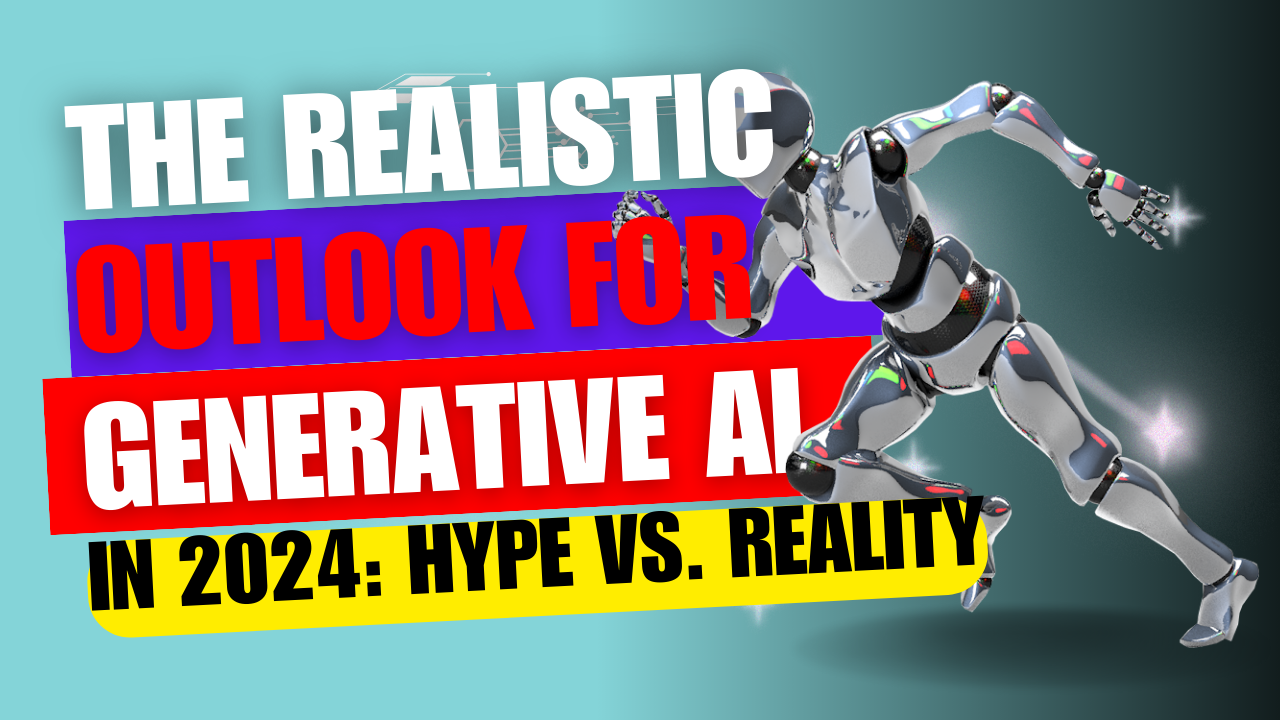The Realistic Outlook for Generative AI in 2024: Hype vs. Reality
Discover why generative AI, including ChatGPT, may face a reality check in 2024. Learn about the hurdles, investment by tech giants, and what the future holds for AI.
Realistic Outlook for Generative AI
In the fast-evolving realm of artificial intelligence, 2023 has been a year of tremendous hype, with major tech players like Microsoft, Google, Meta, and Amazon pouring investments into cutting-edge AI products. From OpenAI's ChatGPT to Google's Bard AI, a slew of AI-powered solutions has emerged in just a matter of months. However, as we look ahead to 2024, the enthusiasm surrounding AI may face a reality check.
According to CCS Insight, a respected analyst firm, the generative AI field is poised to receive a "cold shower" in 2024, with the hype diminishing significantly.
Ben Wood, the chief analyst at CCS Insight, shared his perspective, "We are staunch advocates for AI, believing in its enormous potential to impact the economy and society positively, enhancing productivity. Nevertheless, the hype surrounding generative AI in 2023 has been so overwhelming that it appears overblown, with numerous obstacles remaining before it can hit the market," he conveyed during an interview with CNBC.
CCS Insight's report delves into the intricacies of Generative AI models, which include notable names such as OpenAI's ChatGPT, Google Bard, Anthropic's Claude, and Synthesia. These models rely on substantial computing power to process complex mathematical algorithms and formulate responses to user queries.
To fuel these AI applications, companies must acquire high-powered chips, often opting for advanced graphics processing units (GPUs) provided by the U.S. semiconductor giant Nvidia. The demand for such GPUs is vast, with both large corporations and small-scale developers relying on them to execute their AI workloads, as reported by CNBC.
However, the tides are shifting. Companies like Amazon, Google, Alibaba, Meta, and reportedly OpenAI, are now developing their customized AI chips tailored for these AI programs.
The escalating expenses involved in deploying and sustaining generative AI cannot be overlooked. While tech giants can manage these costs, many organizations and developers may find it financially burdensome. As CCS Insight's Ben Wood aptly put it, "For many organizations and developers, it's just going to become too expensive."
The year 2024 may well usher in a new era of pragmatic evaluation for generative AI, where the balance between excitement and feasibility will be tested.
Frequently asked questions about generative AI and its outlook for 2024:
Q1: What is generative AI, and why is it generating so much hype?
Generative AI refers to a subset of artificial intelligence that focuses on creating content, such as text, images, or even music, autonomously. It has garnered hype due to its potential to revolutionize content creation, customer service, and more.
Q2: Why is there a prediction that generative AI will face a reality check in 2024?
The prediction comes from analyst firm CCS Insight, which believes that the hype surrounding generative AI in 2023 has been excessive. They anticipate that several obstacles, including the high costs of deployment, will temper expectations in 2024.
Q3: What obstacles are hindering the widespread adoption of generative AI?
One major obstacle is the substantial computing power required to run generative AI models. These models rely on complex mathematical algorithms, necessitating advanced graphics processing units (GPUs) or customized AI chips. The cost of these components can be a deterrent for many organizations.
Q4: Which companies are heavily investing in generative AI?
Major tech brands like Microsoft, Google, Meta, and Amazon are among the prominent investors in generative AI. They have introduced products like OpenAI's ChatGPT and Google's Bard AI to explore the technology's potential.
Q5: How do generative AI models like ChatGPT work?
Generative AI models use large datasets and complex algorithms to generate human-like responses to user prompts. They "learn" from the data provided to them, allowing them to understand and respond to a wide range of queries.
Q6: What can we expect from generative AI in the coming years?
While the hype may diminish, generative AI is expected to continue evolving. Companies are likely to find more efficient ways to deploy it, making it accessible to a broader audience.
Q7: Is generative AI still a promising field despite the projected reality check?
Generative AI remains a promising field, but its journey to widespread adoption may be more gradual and calculated. Over time, it will likely find its place in various industries, from content creation to customer support.
These questions address key aspects of generative AI and the expectations for the technology in 2024. If you have any more specific inquiries or need additional information, feel free to ask!
In conclusion, the grand expectations surrounding generative AI, exemplified by ChatGPT and other similar models, are anticipated to encounter a dose of reality in 2024. Major tech companies are heavily investing in AI, but the challenges of deploying and maintaining these models, along with the rising costs, pose substantial barriers for many organizations and developers. As the hype settles, it will be essential to address these obstacles to unlock the true potential of generative AI and ensure it becomes a practical, accessible, and valuable tool in various domains. The journey of AI is far from over, and 2024 may be the year when it faces its most significant reality check yet.
Written by: Md Muktar Hossain
























